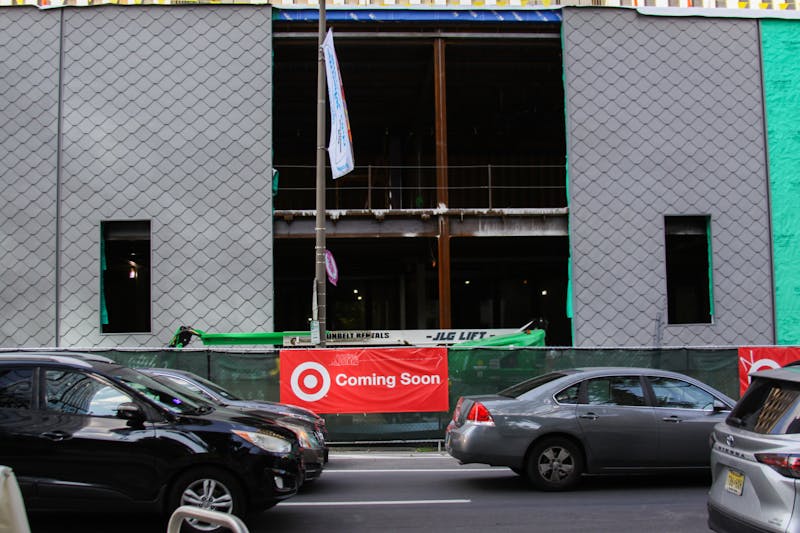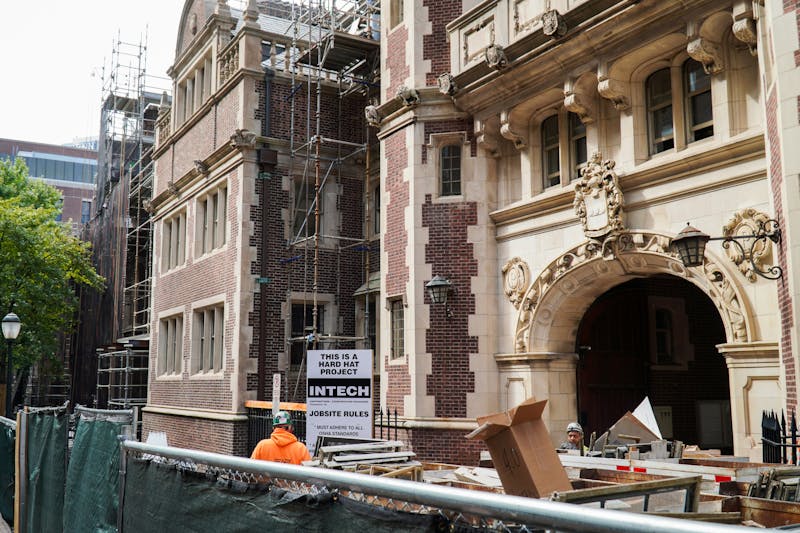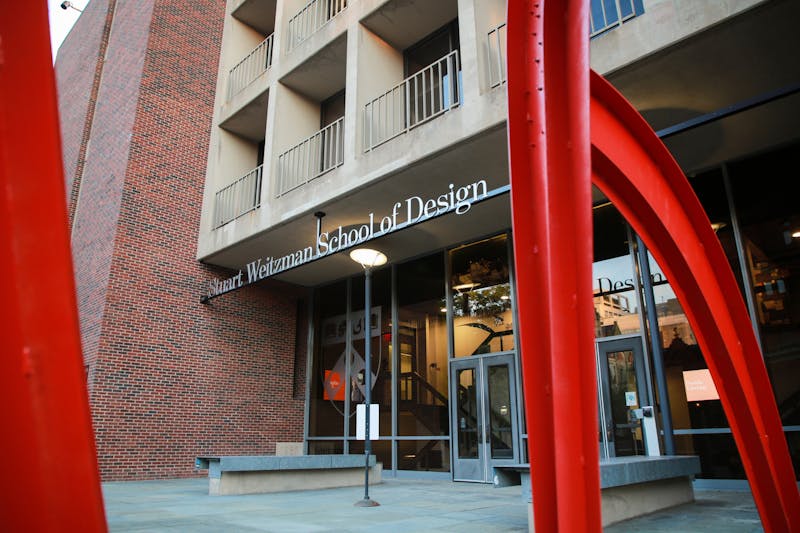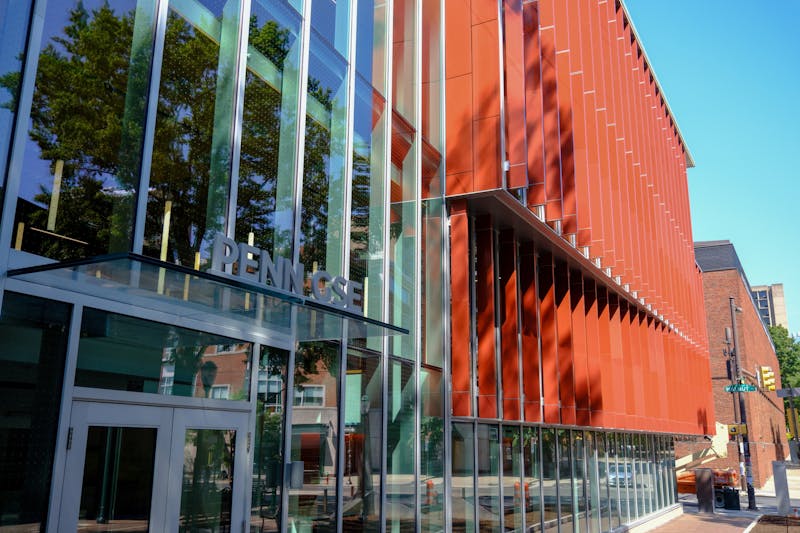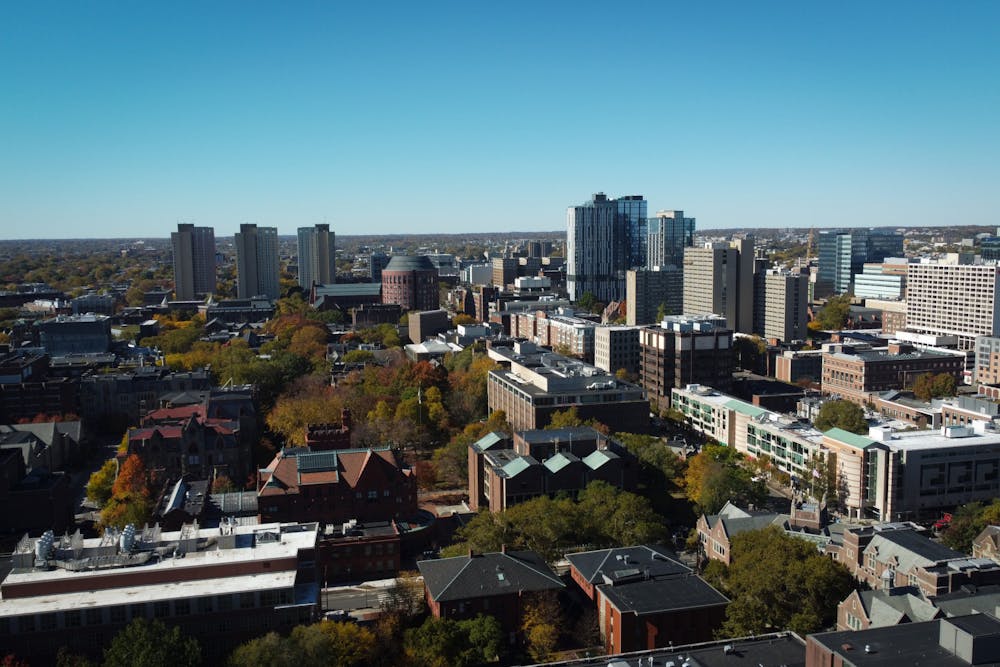
Penn is entering a new, $600 million stage of campus construction, including renovations to David Rittenhouse Laboratory and a focus on expanded space for student performing arts groups.
As Penn Connects 3.0 — the third phase of the campus planning strategy launched under former President Amy Gutmann — is completed, planning for a number of new construction and renovation projects is underway. The DP spoke with University Architect Mark Kocent about the latest phase of campus development, its current timeline, and how it will affect the University and Philadelphia communities.
Penn Connects was conceived in 2006, intended as a "land use and urban design strategy with a 30-year horizon to advance Penn as a premier urban research university," according to the Office of the Executive Vice President. The first phase, Penn Connects 1.0, concluded in 2010 and included renovations of the High Rises.
Penn Connects 2.0 took place from 2011 to 2016 and included the construction of Lauder College House, while Penn Connects 3.0 was intended to conclude in roughly 2022 — although some final projects are still underway. This third phase has seen the construction of Gutmann College House and the Vagelos Laboratory for Energy Science and Technology, the renovations of the Quad and of Stouffer College House, and the recently completed expansion of the Graduate School of Education.
Because the Penn Connects vision was largely conceived under Gutmann’s tenure, the next phase of campus development may not be named Penn Connects 4.0, Kocent said. He added that Penn President Liz Magill may unveil these forthcoming projects as part of her own strategic vision for the University that she is expected to announce under a plan titled "Tomorrow, Together."
The next stage of campus development includes five major projects: a new Student Performing Arts Center, expanded studio space in Stuart Weitzman Hall, a new Weitzman Theatre at the Annenberg Center Plaza, a comprehensive renovation of the David Rittenhouse Laboratory Building, and the Ott Center for Track and Field, Kocent said.
Altogether, these projects will cost almost $600 million. The first of the projects scheduled for completion is the Ott Center, an indoor track and field facility, which is currently under construction and estimated to be fully in use by September 2024. The four other projects are scheduled for completion in four to five years, and all are being conceived with the goal of achieving a LEED Silver rating, Kocent said.
The Ott Center — an almost $70 million six-lane indoor track stadium — will provide space for groups in the Philadelphia region to hold events throughout the winter and during periods of inclement weather. Because there is currently no other indoor track facility in the Philadelphia region, teams who would otherwise have to travel to the Lehigh Valley or New York may no longer need to do so, Kocent said.
The Student Performing Arts Center and Stuart Weitzman Hall expansion are currently in the construction documentation stage. The Weitzman Theatre is currently in the schematic design stage, and the renovation of DRL is currently in the programming and conceptual design stage.
The $350 million renovation and rebuilding of DRL, which will include a new physical sciences building, will be the most complex and costly of the five projects. It comes as part of a $750 million investment in science, engineering, and medicine announced in fall 2021.
Because of the complexity of actively tearing down part of DRL's structure and rebuilding it while another part of the building is still in use, Penn needs to perform the construction in phases, Kocent said. DRL's renovations will follow a similar process to the Quadrangle construction project, which was divided into three distinct phases for each college house.
The timeframe of the DRL renovation is not yet concrete, Kocent said, but the current stage of the project is in conceptual design. He anticipated around three to four years before the project design and construction would be completed.
The 33rd Street entrance of DRL was built in the 1950s and will probably be the focal point of the demolition, Kocent added. However, the portion of the DRL structure along Walnut Street is newer and is more likely to be retained.
Although faculty offices will have to be moved to other locations during the construction, Kocent said that “everyone involved with DRL, all the math, astronomy, physics, [and] physical science faculty are very excited about finally having new space.”
Penn is also undergoing two projects aimed at providing more space for performing arts students.
Construction of the Student Performing Arts Center on 33rd and Chestnut Streets is scheduled to start construction in the summer of 2024. The $75 million project is estimated to be finished in winter 2026. The Performing Arts Center is in addition the Stuart Weitzman Theatre project in Annenberg Plaza, which will cost $20 million and is scheduled for completion in summer 2027.
Because most performing arts groups hold performances at the end of the semester, the two investments will alleviate the pressure of not having enough space for these groups to perform, Kocent said.
A $57 million graduate-student oriented expansion of Stuart Weitzman Hall consisting of fine arts studios and architecture planning spaces is scheduled to be completed by fall 2025.
"The School of Design really hasn’t built a new building for fifty years," Kocent said.
Kocent said that administrators must balance upgrading facilities with providing financial aid to students and aligning these considerations with fundraising capacity. Recent donor backlash following the University response to instances of antisemitism on campus and the Israel-Hamas war will not jeopardize the construction of these projects, he added.
"The funding is all in place," Kocent said. "Penn’s trustees are pretty conservative in that we have very detailed funding plans for our commitments."
Penn's style of financial management has avoided major financial destabilization through periods such as the 2008 recession and the economic impacts of the COVID-19 pandemic, he said.
“[These projects are] a reflection on what the schools’ and centers' programming needs are,” Kocent said.
The Daily Pennsylvanian is an independent, student-run newspaper. Please consider making a donation to support the coverage that shapes the University. Your generosity ensures a future of strong journalism at Penn.
Donate




